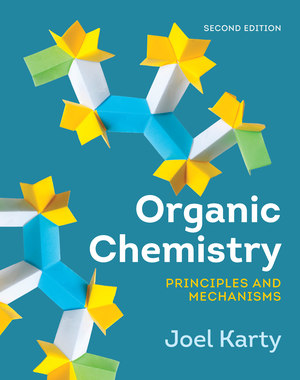Test Bank for Organic Chemistry Principles and Mechanisms, 2nd edition, Joel Karty
Test Bank for Organic Chemistry Principles and Mechanisms, 2nd edition, Joel Karty
$55.00
Description
Test Bank for Organic Chemistry Principles and Mechanisms, 2nd edition, Joel Karty,
Table of Content
1. Atomic and Molecular Structure
Interchapter A Nomenclature: The Basic System for Naming Simple Organic Compounds: Alkanes, Haloalkanes, Nitroalkanes, Cycloalkanes, and Ethers
2. Three-Dimensional Geometry, Intermolecular Interactions, and Physical Properties
3. Orbital Interactions 1: Hybridization and Two-Center Molecular Orbitals
Interchapter B Naming Alkenes, Alkynes, and Benzene Derivatives
4. Isomerism 1: Conformational and Constitutional Isomers
5. Isomerism 2: Chirality, Enantiomers, and Diastereomers
Interchapter C Stereochemistry in Nomenclature: R and S Configurations about Asymmetric Carbons and Z and E Configurations about Double Bonds
6. The Proton Transfer Reaction: An Introduction to Mechanisms, Thermodynamics, and Charge Stability
7. An Overview of the Most Common Elementary Steps
Interchapter D Molecular Orbital Theory, Hyperconjugation, and Chemical Reactions
Interchapter E Naming Compounds with a Functional Group That Calls for a Suffix 1: Alcohols, Amines, Ketones, and Aldehydes
8. An Introduction to Multistep Mechanisms: SN1 and E1 Reactions and Their Comparisons to SN2 and E2 Reactions
Interchapter F Naming Compounds with a Functional Group That Calls for a Suffix 2: Carboxylic Acids and Their Derivatives
9. Nucleophilic Substitution and Elimination Reactions 1: Competition among SN2, SN1, E2, and E1 Reactions
10. Nucleophilic Substitution and Elimination Reactions 2: Reactions That Are Useful for Synthesis
11. Electrophilic Addition to Nonpolar ? Bonds 1: Addition of a Brønsted Acid
12. Electrophilic Addition to Nonpolar ? Bonds 2: Reactions Involving Cyclic Transition States
13. Organic Synthesis 1: Beginning Concepts
14. Orbital Interactions 2: Extended ? Systems, Conjugation, and Aromaticity
15. Structure Determination 1: Ultraviolet-Visible and Infrared Spectroscopies
16. Structure Determination 2: Nuclear Magnetic Resonance Spectroscopy and Mass Spectrometry
17. Nucleophilic Addition to Polar ? Bonds 1: Addition of Strong Nucleophiles
18. Nucleophilic Addition to Polar ? Bonds 2: Weak Nucleophiles and Acid and Base Catalysis
19. Organic Synthesis 2: Intermediate Topics in Synthesis Design, and Useful Redox and Carbon-Carbon Bond-Formation Reactions
20. Nucleophilic Addition–Elimination Reactions 1: The General Mechanism Involving Strong Nucleophiles
21. Nucleophilic Addition–Elimination Reactions 2: Weak Nucleophiles
22. Aromatic Substitution 1: Electrophilic Aromatic Substitution on Benzene; Useful Accompanying Reactions
23. Aromatic Substitution 2: Reactions of Substituted Benzene and Other Rings
24. The Diels–Alder Reaction and Other Pericyclic Reactions
25. Reactions Involving Free Radicals
Interchapter G Fragmentation Pathways in Mass Spectrometry
26. Polymers



Reviews
There are no reviews yet.